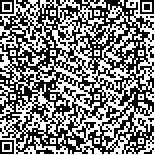郭汉青,付婷婷,邹存华,等.电刺激结合手法按摩治疗盆底肌筋膜疼痛综合征的临床疗效[J].中华物理医学与康复杂志,2020,42(1):55-59
扫码阅读全文

|
| 电刺激结合手法按摩治疗盆底肌筋膜疼痛综合征的临床疗效 |
|
| |
| DOI:DOI:10.3760/cma.j.issn.0254-1424.2020.01.013 |
| 中文关键词: 盆底肌筋膜疼痛综合征 电刺激 手法按摩 表面肌电 |
| 英文关键词: Myofascial pelvic pain syndrome Electrical stimulation Manual massage Surface electromyography |
| 基金项目:青岛市民生科技计划项目(17-3-3-11-nsh) |
|
| 摘要点击次数: 7719 |
| 全文下载次数: 9278 |
| 中文摘要: |
| 目的 探讨电刺激结合手法按摩对盆底肌筋膜疼痛综合征(MPPS)的临床疗效。 方法 选取符合纳入标准的MPPS患者93例,采用随机数字表法分为红外线组(30例),电刺激组(31例)和联合组(电刺激+手法按摩,32例)三组。红外线组给予红外线照射治疗,照射患者疼痛明显部位(下腹部或者腰骶部),照射距离15~20 cm,每日1次,每次30 min,共治疗10次;电刺激组给予电刺激治疗,先行经皮神经电刺激,频率80~120 Hz,脉宽80~120 μs,治疗15 min;然后行内啡肽联合经皮神经电刺激治疗,脉宽230~270 μs,频率2~4 Hz,治疗15 min,1日1次,每次30 min,共治疗10次;联合组在电刺激的基础上给予手法按摩,每次电刺激结束后(方法与电刺激组相同),由经过培训的有经验的康复治疗师给予盆底肌筋膜手法按摩治疗15 min,每日1次,共治疗10次。分别于治疗前和治疗结束后(治疗后),观察3组患者治疗前后疼痛的目测类比法(VAS)评分及盆底表面肌电评估(Glazer评估)测量指标的变化、治疗后的临床疗效及治疗结束1个月后的疼痛复发情况。 结果 治疗后,3组患者的VAS评分、前后静息电位及变异性均较组内治疗前明显改善;联合组和电刺激组治疗后的VAS评分分别为(2.15±1.43)分和(3.75±1.62)分,明显优于红外线组[(5.02±1.59)分],组间差异有统计学意义(P<0.05);治疗后,联合组和电刺激组的总有效率(联合组96.87%、电刺激组80.65%)及前后静息电位及变异性亦均显著优于红外线组(红外线组总有效率56.67%),差异有统计学意义(P<0.05);而且联合组的VAS评分、前后静息电位及变异性亦明显优于电刺激组(P<0.05)。治疗结束1个月后,联合组、电刺激组、红外线组的疼痛复发率分别为6.25%、25.81%和53.33%,组间差异有统计学意义(P<0.05)。 结论 电刺激联合手法按摩是治疗MPPS的有效方法,可降低疼痛的短期复发率。 |
| 英文摘要: |
| Objective To evaluate the clinical effectiveness of combining electrical stimulation with manual massage in treating women′s myofascial pelvic pain (MPPS). Methods A total of 93 MPPS patients were recruited and randomly divided into an infrared irradiation group (n=30), an electrical stimulation group (n=31) and a combination group (n=32). Those in the infrared group and the electrical stimulation group were given 30 minutes of infrared irradiation or electrical stimulation daily for 10 days, while the combined group was given a manual massage with electrical stimulation. The response to treatment was evaluated using a visual analogue scale (VAS) to rate discomfort, plus a physical examination, and surface electromyography results using Glazer′s protocol. The treatments′ efficacy and the recurrence of pain were evaluated 1 month after the treatment. Results The average VAS ratings, resting potentials and their variability of the three groups all improved significantly after the treatment. The average VAS scores of the combined and electrical stimulation groups after the treatment were significantly lower than that of the infrared group. Moreover, the total effective rates of the combined group (96.87%) and the electrical stimulation group (80.65%) were significantly higher than that of the infrared group (56.67%), and the resting potential and variability of the former two groups were also significantly better. All of the above measurements among the combined group after the treatment were significantly better, on average, than in the electrical stimulation group. A month later the recurrence rate in the combined group (6.25%) was significantly lower than in the electrical stimulation group (25.81%) and the infrared group (56.67%). Conclusion Electrical stimulation combined with manual massage is effective in relieving myofascial pelvic pain. |
|
查看全文
查看/发表评论 下载PDF阅读器 |
| 关闭 |